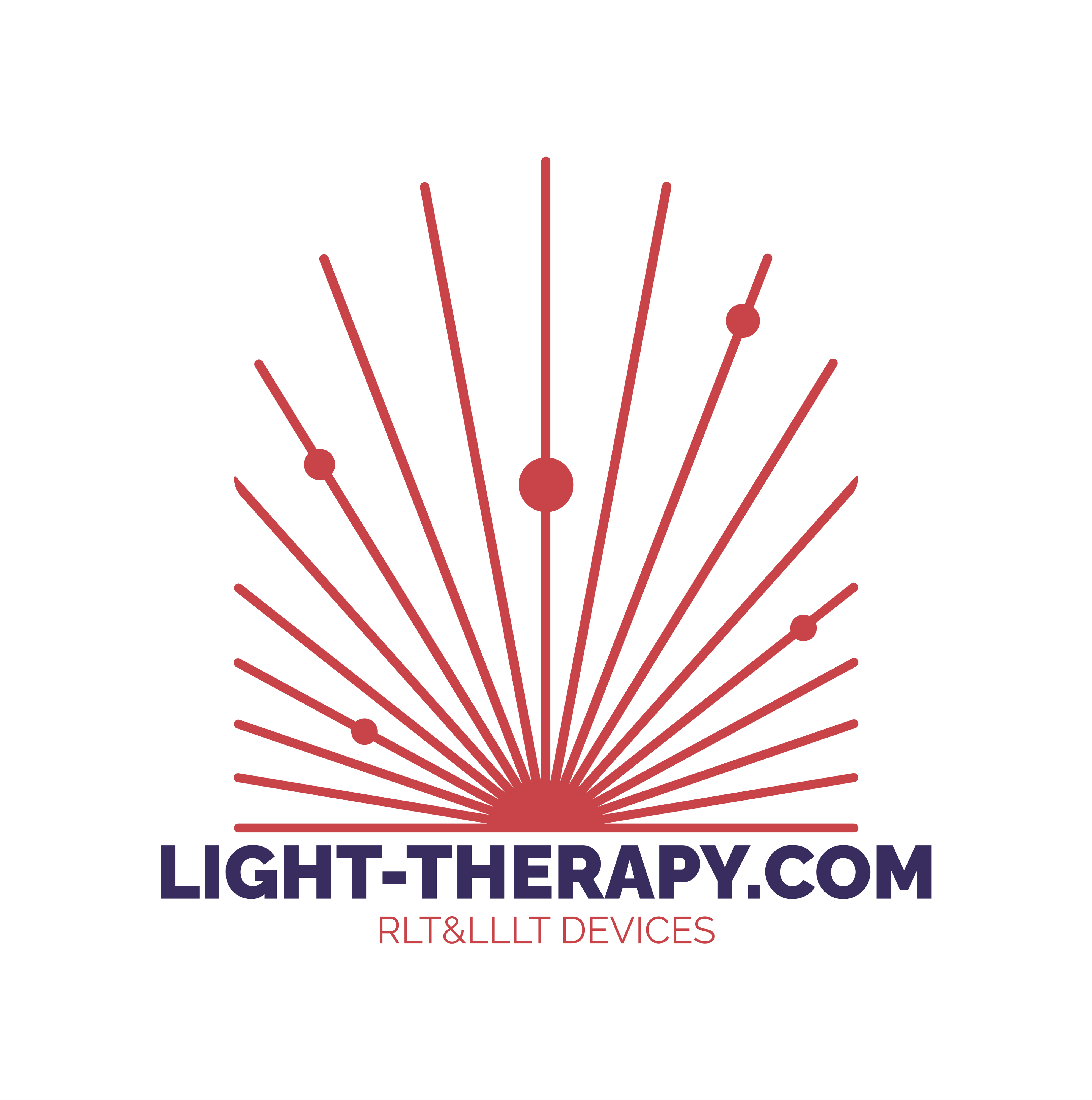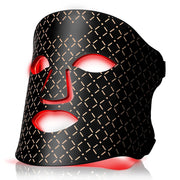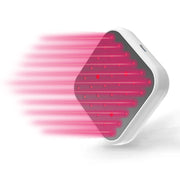Whether your goal is improved health, fat loss, a more attractive body – or all three – red light therapy could be the answer you’re seeking.
Red light therapy is best known for its effectiveness with pain relief, as well as treating chronic skin conditions, scars, skin damage from aging, and accelerating muscle recovery after injuries. Clinical research has also shown that red light therapy can lead to weight loss. In fact, it is becoming increasingly popular as a body contouring treatment.
Of course, a healthy lifestyle is the best way to lose excess fat and maintain a healthy weight. But with red light therapy, you can benefit from the emotional boost of achieving fast results, which will improve your mindset and motivate you to stick with your weight loss program.
And even better, red light therapy supports your body at the cellular level. So, in addition to using red light to lose fat, it also treats many causes of excess weight.
In this article, we’ll explore red light therapy for weight loss: what it does, how it works, and how it can help you lose body fat and achieve your ideal weight.
How Does Red Light Therapy Work for Weight Loss?
Also known as photobiomodulation or low-level light therapy (LLLT), the term “red light therapy” refers to both red and near-infrared (NIR) wavelengths. Research has overwhelmingly shown that the most beneficial wavelengths fall between 650 nanometers (nm) to 850nm, a range that’s known as the “therapeutic window.”
Within this window, red light ranges from 620–700nm and NIR light ranges from 810–850nm.
These particular red and NIR wavelengths have been widely studied and are proven to have dozens of therapeutic benefits on the human body. In this article you’ll find a great deal of information about the benefits of red and NIR light therapy.
Red light therapy uses light-emitting diode (LED) bulbs to bathe the body in light waves in both the red and NIR spectrum. The most effective red light devices are powerful panels that are fitted with LED bulbs precisely calibrated to specific red and NIR wavelengths.
Once light photons from these LED bulbs interact with the body’s cells, they spark a chain of positive biological effects.
Benefits of Red Light Therapy for Weight Loss
Now that you’re familiar with some of the ways red light therapy can promote fat reduction, you undoubtedly have some questions about specific applications for red light therapy treatments. In this section, we address some of the most common questions.
Does Red Light Get Rid of Cellulite?
Cellulite is excess subcutaneous fat, meaning fat that is just beneath the skin. It’s a stubborn, persistent problem that cannot necessarily be remedied with exercise and fat loss alone – but red light therapy has shown great promise in reducing it.
One fascinating study on cellulite examined the effects of combining near-infrared light with treadmill training. The study divided 20 female participants into two groups: one that was treated with 850nm NIR light along with high-intensity treadmill training, and one that only used the treadmill. The group that used both forms of treatment achieved reduced cellulite in the buttocks and hip areas, whereas the treadmill-only group did not.
Is Targeted Weight Loss Possible with Red Light Therapy?
Targeted weight loss, also known as body sculpting or body contouring, is on the wish list of almost everyone who wants to lose weight. It is the process of removing fat from certain areas of the body while keeping fat stores in desirable areas. For example, many women want to keep the fat around their breasts but remove belly fat or “saddlebags,” meaning fat stored on the outside of the thighs near the buttocks.
This desire for control over body shape has resulted in the popularity of body contouring, which is a cosmetic approach that focuses on areas of the body where fat tends to settle: the waist, hips, thighs, and upper arms.
Historically, targeted weight loss has been viewed as an impossibility. And it’s easy to see why, since a combination of eating less and exercising to burn more calories results in overall fat and weight loss but doesn’t target specific areas; and everyone has different areas where they tend to store fat. But …
Red light provides an effective mechanism for localized fat loss.
In one 2011 study on the effects of red light on body contouring, 40 healthy men and women experienced a significant reduction (about 1”) in waist measurements after undergoing 30-minute treatments twice per week for four weeks (eight total treatments) – and they achieved these results without altering diet or exercise habits.
Another study used 635nm red light to spot-reduce excess fat stored around the waist, hips, and thighs of 65 male and female participants. When the targeted areas were measured, the combined loss was an average of 3.51 inches, with no changes to diet or exercise.

Can Infrared and Near-Infrared Light Help You Lose Weight?
The fat-loss benefits of red light (620-660nm) are profound, but they are limited to fat stored directly under the skin. Red light can only penetrate the dermal layer where it activates cellular metabolism at and just below the surface of the skin. This is where most excess fat is stored, so it is possible to have great results with a red-light-only approach.
Near-infrared and infrared (IR) light penetrate deeper into the body than red light. To promote weight loss and improve body composition (the ratio of muscle to fat), it’s necessary to stimulate the metabolism at a deeper level.
Technically, near-infrared light is part of the infrared spectrum. However, between 810 and 850nm, these wavelengths behave more like red wavelengths than far-infrared, which the body perceives as heat.
IR light is effective at treating deep-body conditions, but must be used with caution to prevent thermal damage. This makes NIR light (which does not generate heat in the body) safe and effective.
Let’s go back to increasing muscle mass, which will boost your metabolism and make it easier to lose weight and keep it off.
Infrared light (which includes near-infrared light below 850nm) has been intensively researched. During a 2018 study, researchers from Brazil found that near-infrared light improved body composition and reduced inflammation. When NIR light therapy was added to an exercise regimen, it showed significantly increased fat loss over exercise alone.
Another Brazilian study in 2017 found that NIR wavelengths accelerate deep-tissue muscle healing and growth when applied before exercise. Increased muscle mass is directly tied to an increase in baseline metabolism, meaning the number of calories burned while the body is at rest. The more muscle mass you have, the “hotter” the body burns at rest, which contributes to the loss of fat mass.
What About Low-Level Laser Therapy Weight Loss Results?
Like LED light therapy, low-level laser therapy can be used to support fat loss. A 2019 study by Mayo Clinic researchers involved comparing the effects of three different LLLT frequencies on weight, waist circumference, body fat percentage, and quality of life.
Sixty overweight participants were randomized to various LLLT treatments (three times weekly for four weeks, two times weekly for six weeks, or once weekly for 12 weeks). The group that experienced the greatest results was the one receiving two treatments per week for six weeks. The most remarkable outcome was a 6–12” reduction in waist circumference after the six-week treatment.
The study authors concluded that LLLT “has the potential to enhance motivation for weight management treatments by providing immediate positive feedback through reductions in waist circumference recognizable by the individual.”
The challenge with the most effective LLLT treatments is that they are done in a dermatologist’s office, which can be inconvenient. Also, treatments are costly: often on average several thousands of dollars for a six-treatment package, and results are not permanent.
At-home laser devices, which are typically handheld, will yield results over time, but it’s difficult to target larger areas with small handheld devices. It is possible but will require spending a lot of time treating your belly, thighs, etc.
A much better solution is LED red light panels, which allow you to achieve your target weight and continue to use red light therapy on an ongoing basis to maintain your weight loss. And, each treatment could be as short as 10 minutes if you have two large panels that can shine red and NIR light front and back.
Is Red Light Therapy Effective for Loose Skin After Losing Weight?
After losing a significant amount of weight quickly, many people are left with loose, sagging skin. This is especially true for older people whose skin has already succumbed to the aging process. Loose skin can be unsightly and embarrassing, and notoriously difficult to get rid of.
Cosmetic surgery can help, but there are non-surgical options that can restore firmer skin over time, including exercise, retinoid creams, collagen supplements, and massage.
- Exercise can build muscle mass that will help to create a more filled-in appearance;
- Retinoid creams stimulate the production of collagen and elastin; as skin replaces itself, it will gradually become firmer and more elastic over time, although some people develop allergic reactions;
- Collagen supplements will also help stimulate collagen production; however, they won’t increase elastin production, and both are important for skin firmness and elasticity;
- Massage stimulates blood flow to the skin, which helps promote healthy fibroblasts or the precursors to collagen and elastin
Red light therapy works to improve your skin from the inside out – but patience is key. Your skin didn’t stretch overnight, and it will take time for it to “bounce back” as new, healthy skin cells along with collagen and elastin proteins regenerate. It’s a long-term, but effective treatment. Get more in-depth information on how red light tightens loose skin in this article.
We recommend using a device that emits both red and NIR wavelengths. This gives you a combination of skin-deep (red wavelengths) and systemic benefits (NIR wavelengths), such as reducing inflammation that could be interfering with your skin’s health.
How Does Red Light Therapy Tighten Loose Skin?
As mentioned earlier, red light increases cellular energy and can help increase muscle mass. But there’s much more to skin health than energized, fully functioning cells or the support that firm muscles provide.
- Increased Collagen and Elastin Production. According to a 2008 research review by Joseph Tafur and Paul Mills of the University of California at San Diego, certain cells, including fibroblasts (the cells responsible for collagen and elastin synthesis), are particularly responsive to light.
- ovides nutrients to skin cells and removes waste products that could be interfering with cellular functioning. Endothelial cells, which make up the inner layer of capillaries, are present in both the cardiovascular system and the lymphatic system.

How Red Light Therapy Helps Reduce Stretch Marks
If you’ve gained a lot of weight rapidly, you probably developed stretch marks. Untreated, these don’t go away after you lose weight, although they may fade over time.
Red light therapy can boost your skin’s ability to regenerate itself as healthy skin, not scarred skin. The mechanisms for this include enhanced collagen and elastin production, increased microcirculation, and improved cellular metabolism, which also regulates how quickly cells regenerate themselves.









